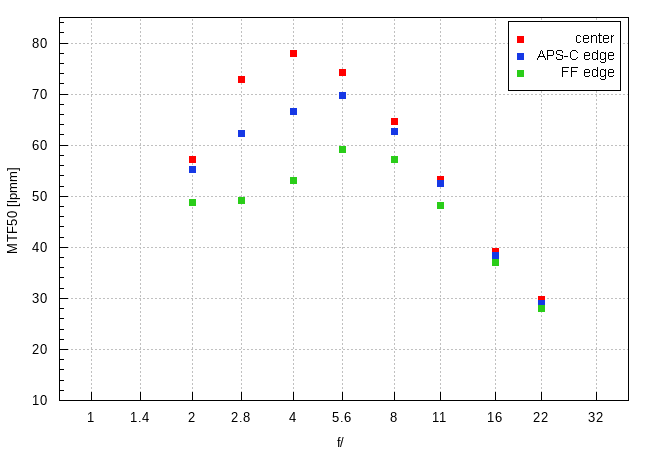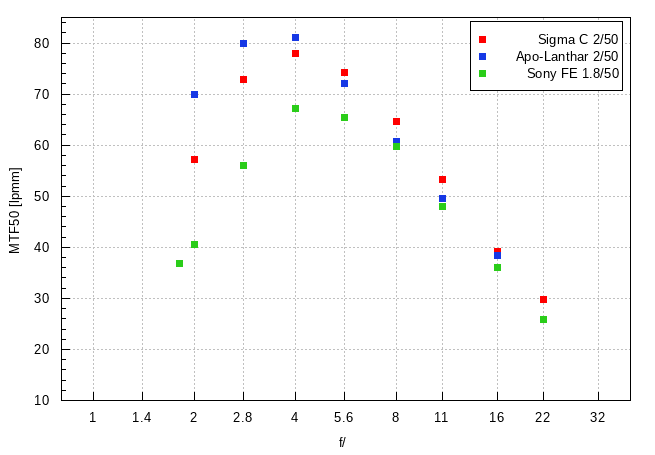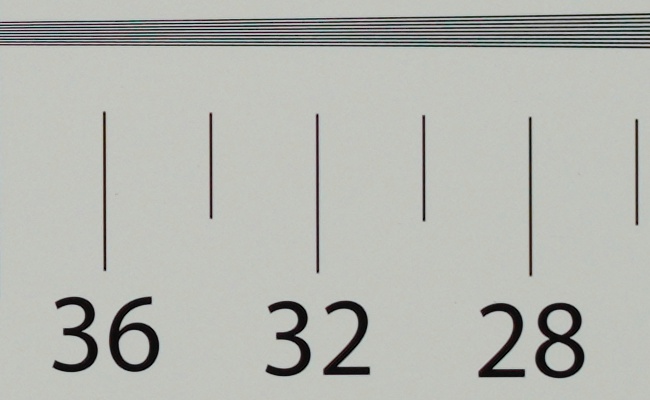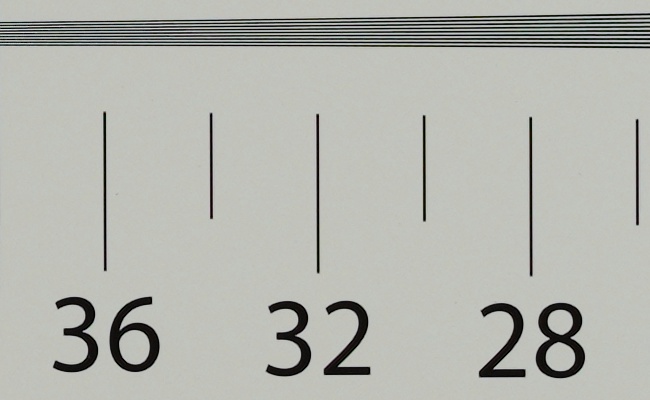Sigma C 50 mm f/2 DG DN
4. Image resolution
Let's check how the Sigma C 50 mm f/2 DG DN compares – below you can find its results in the frame centre and on edges of APS-C sensor and full frame.

The frame centre is simply splendid. Already at the maximum relative aperture the results are good, with the lens reaching over 57 lpmm. That level improves very quickly on stopping down the aperture so by f/2.8 the Sigma gets to almost 73 lpmm and by f/4.0 it is able to achieve an excellent level of almost 78 lpmm.
Please Support UsIf you enjoy our reviews and articles, and you want us to continue our work please, support our website by donating through PayPal. The funds are going to be used for paying our editorial team, renting servers, and equipping our testing studio; only that way we will be able to continue providing you interesting content for free. |
- - - - - - - - - - - - - - - - - - - - - - - - - - - - - - - - - - - - - - - - - - - - - - - -
Still, the fact that C series lenses are small means there have to be some compromises. They often concern resolution on the edges of the frame. However, in case of the tested model we couldn't find anything at all, quite the opposite. On the edge of the APS-C sensor the performance of the lens is very good, almost as good as the values you see in the frame centre.
The edge of full frame is the weakest – the performance of the lens improves quite slowly on stopping down. Still, even at the maximum relative aperture and near it the results brush against a quite nice level of 50 lpmm; on stopping down the Sigma is able to get to almost 60 lpmm.
At the end of this chapter we would like to compare directly the tested Sigma and the Voigtlander Apo-Lanthar with exactly the same parameters. In order to make it even more interesting, let's add also the performance of the Sony FE 50 mm f/.8, a simple double gauss lens.

As you can notice, the Sigma and the Voigtlander are able to outclass the older optical system even though they are a bit slower. What's more, the Apo-Lanthar is a lens sharper than the Sigma practically across the whole aperture range. Of course we have to add that this duel is on such a high level that the Sigma shouldn't be criticized at all for the defeat.
At the end of this chapter, traditionally, we present crops taken from photos of our resolution testing chart saved in JPEG format alongside RAW files which we used for the analysis above.
| A7R III, JPEG, 50 mm, f/2.0 |
 |
| A7R III, JPEG, 50 mm, f/4.0 |
 |






